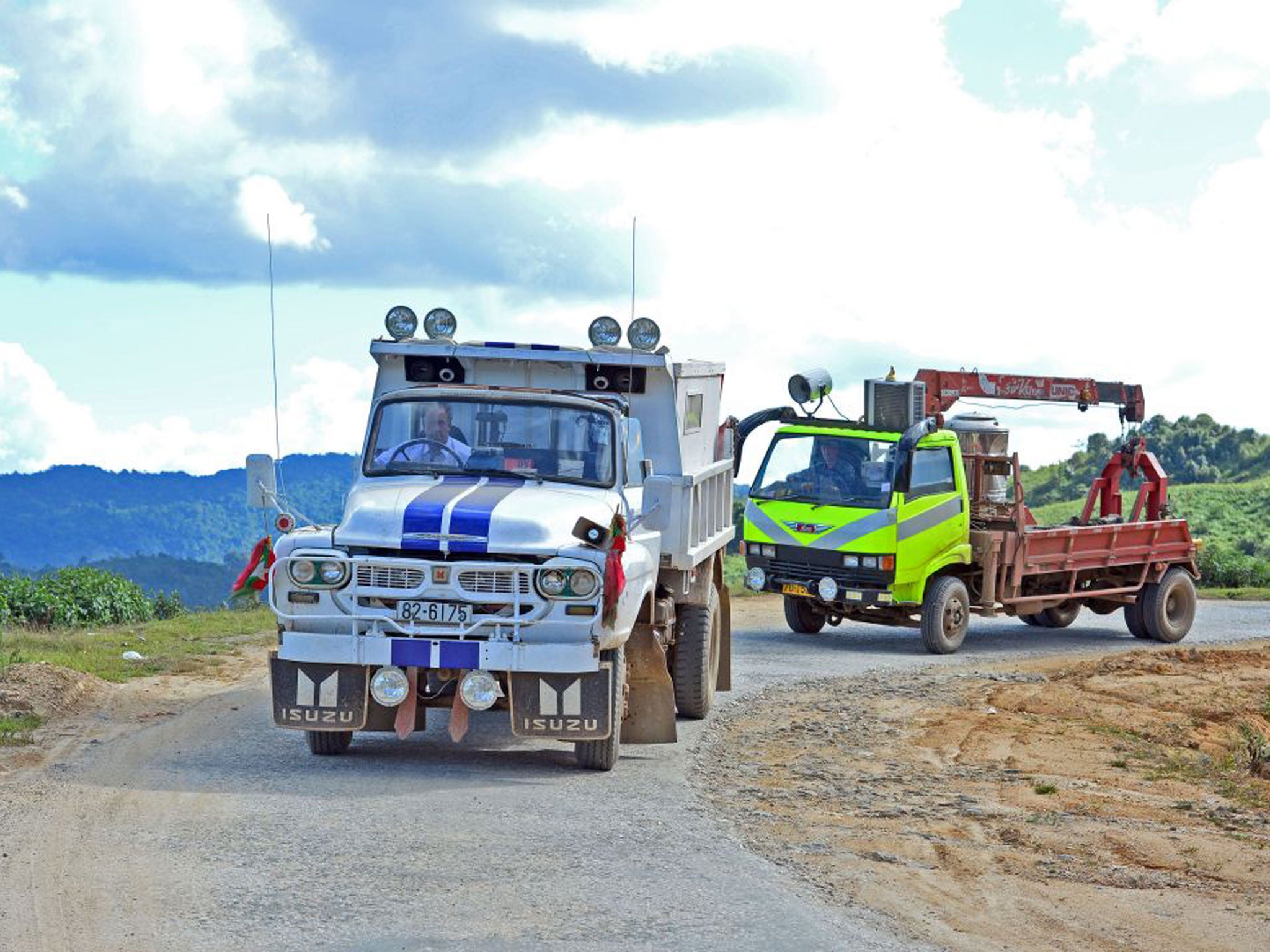Burma's back on the (road) map, but is that a good thing?
Something to Declare

So, Jeremy Clarkson and co put their dirty skid marks all over yet another virgin destination, this time Burma ('Top Gear: Burma Special', BBC2). The team's latest lark involved driving lorries purchased over the internet through Asia's poorest country and up to the far north, where they were required to rebuild the bridge over the River Kwai.
Will the Burmese appreciate that the visitation by Top Gear's men is the BBC's backhanded way of informing the world that Burma has arrived as a tourist destination? I rather doubt it: interest in Britain here does not extend far beyond the Premier League (former military strongman Than Shwe once attempted to buy Manchester United, and Burma's newly created football league is the Premier League in miniature, complete with cranky plutocratic owners.) It is depressingly typical that the only way the programme's producers could shoehorn Burma into its format was by focusing on a wartime atrocity in which large numbers of PoWs died horrible deaths.
The BBC's puff for the two-part programme – describing Burma as "a country that has been largely closed to Westerners for over 40 years" – is plain wrong: Westerners have been visiting Burma regularly throughout that time, only the reluctance of many to reward an obnoxious regime deterring them from coming in larger numbers. Nonetheless Top Gear's certificate of approval, if that is the way to describe it, is fitting: Burma's profile has soared recently. When Aung San Suu Kyi announced, soon after her final release from house arrest in 2010, that she was relaxed about tourists coming back to Burma, the South-east Asian nation went in less than three years from being an obscure destination appreciated mostly by meditators and jade lovers to having the most rapidly expanding tourism portfolio in the world.
The reasons are not hard to find. With its ubiquitous golden pagodas, Burma looks like nowhere else on earth. The people are friendly. The street life is picturesque and laid back. It is not cheap, and the hotels, few of which are distinctive or particularly charming, have always been over-priced, so it has never attracted backpackers in the way that Vietnam now does. But there is a huge variety of landscapes, from the winding colonial boulevards and the parks and lakes of Rangoon, to the huge palace grounds of Mandalay and the world's longest wooden bridge in nearby Amarapura; from the cool uplands of Shan to the brilliant and barely developed beaches of Arakan.
As the government cuts ceasefire deals with formerly rebellious ethnic groups, new areas are opening up: last month I toured Chin State, on the Indian border – open now after being closed to foreigners since 1962 – whose towns look as if they have been transplanted from the American Wild West. The condition of Burma's roads varies from the mediocre to the disastrous, as the Top Gear team discovered, but Burmese with any money have always flown between the main cities, and wise foreigners have always done the same.
Join our commenting forum
Join thought-provoking conversations, follow other Independent readers and see their replies
Comments
Bookmark popover
Removed from bookmarks